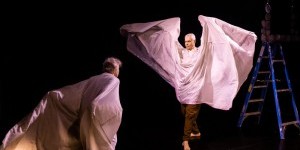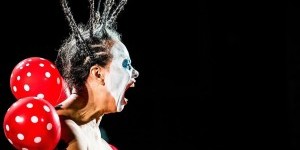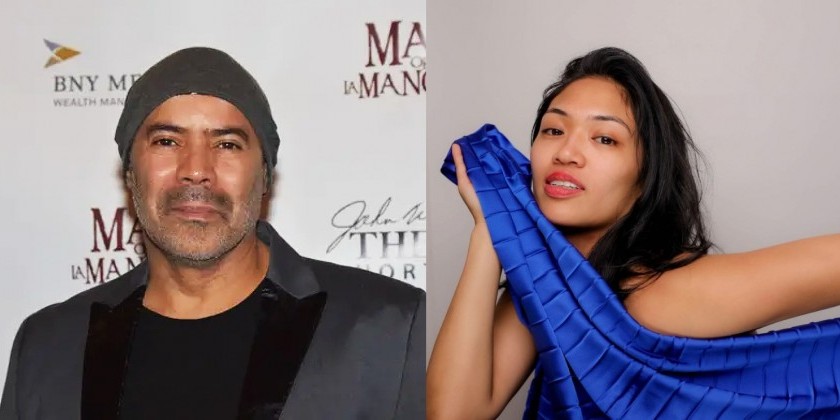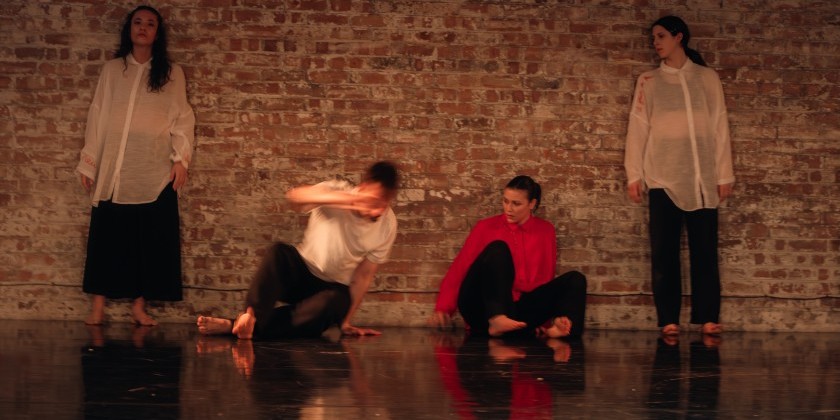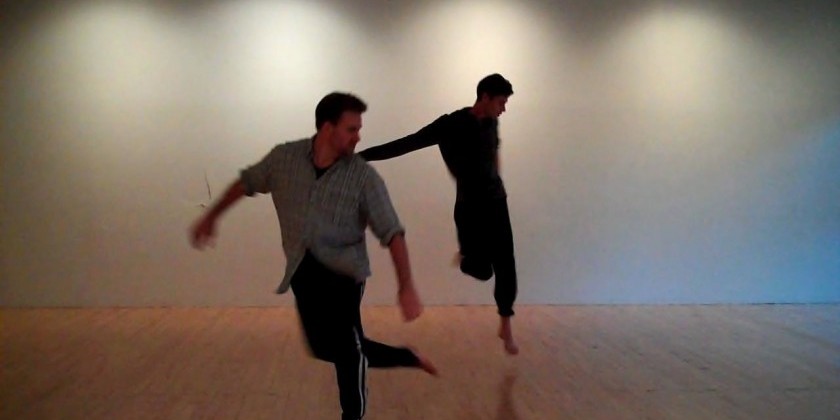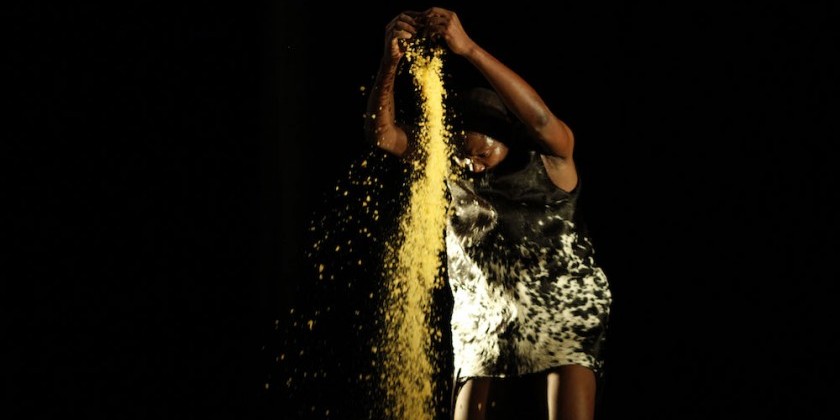The Dance Enthusiast Asks Alice: Tara O'Con
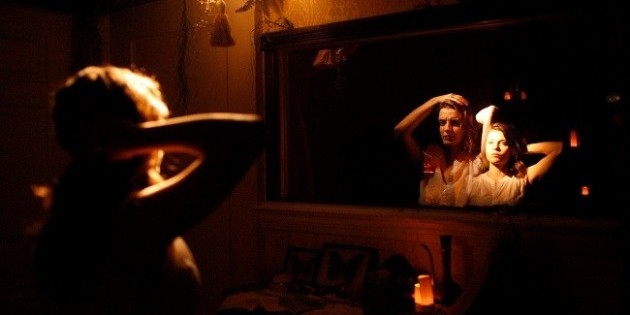
Tara O'Con: A Tale of Two Alices -Then She Fell
Do Ask Alice, Part 1
Tara Sheena for The Dance Enthusiast
Then She Fell is an immersive dance-theater experience that takes its cues off the writings of the wild mind of Lewis Carroll. Loosely based on the characters of Carroll’s fantastical fiction, the show traces a Mad Hatter, White Rabbit, Queen, Nurse, two Alices, and others, through dreamlike scenes that reveal a multi-sensory, transformative world. The audience, limited to just fifteen per show plays as integral a role as the performers. Members of the audience explore the various rooms and elaborate set as they are led through the worlds of Alice by the characters they encounter. Playing at Kingsland Ward in Brooklyn through September 29, The Dance Enthusiast got the full scoop on what it means to be Alice from two completely different perspectives. In this interview, Tara Sheena spoke to Tara O’ Con, performer with Third Rail Projects since 2006, and an Alice since the beginning of the project’s start in 2011.
 |
| Marissa Nielsen-Pincus and Tara O'Con as the two Alice's.Photo by Rick Ochoa. |
Tara Sheena: How did you first get involved with Third Rail Projects?
Tara O’Con: I have been involved with Third Rail Projects since 2006, so about seven years. I first met two of the three co-artistic Directors for Third Rail, Tom Pearson and Zach Morris, as an intern for Dance Theater Workshop [now New York Live Arts], when I was still in college. I was Tom Pearson’s marketing intern.
TS: You’ve been part of Then She Fell since the beginning essentially.
TOC: Yes, from the beginning. There have been a couple iterations of Then She Fell. It started out with Looking Glass which was commissioned by Arts Brookfield, for their properties in Los Angeles and New York, in 2011. It was a durational, site-specific work that happened around these gardens and that was sort of the beginning of our character development—figuring out who we were in relationship to these characters. We took that to the Steampunk Haunted House (at Abrons Arts Center), which Third Rail did for multiple years. It was very much framed in the Halloween, haunted house theme. We had another run of it and it’s more similar to what we do now with bringing the audience around.
TS: Was there anything specifically different about the rehearsal process for a work like this than would take place for a more conventional proscenium performance?
TOC: Their work (artistic directors Tom Pearson, Zach Morris, and Jennine Willett) is very driven by action, characters, and theater. I think over the years that process does really well in grounding the work in the intention with the performers. We have all these histories within ourselves so some of the material for Then She Fell had been percolating since we started Looking Glass. That’s been two years and it’s been developed but there are kernels of things [still there]. We also did work a lot in the studio before we got to the site.
TS: Did they always have this audience-focused process?
TOC: Very much so. Even in the haunted house, the audience was always a key factor. How we work with them [the audience] is something we talk about a lot. When thinking of movement (I mentioned action before) but that comes from his director background. They really do a lot of movement with us in figuring out what we want from a scene and physicalizing those actions. Especially when making duets, it’s about figuring out what we want from that person and how to get that movement-wise. It’s how we made a lot of the movement. I want to flirt or evade or dodge or attack. And, a step back from that, is talking about who these characters are. What their fears are, what they most desire. It’s a lot of fun to get into this certain psychology. There’s a little bit of: what of myself is actually in this character? And vice-versa.
TS: You’ve always been in the “Alice” role. Did you ever do specific research? What direction did you get that was specific to Alice?
TOC: We all read Lewis Carroll’s biography. Lewis Carroll is a big part of the driving, inner conflict of the show. I read Alice in Wonderland. For me, personally, I read Lolita. She’s a little feisty [laughs].
TS: Is your Alice super feisty? How would you characterize your Alice?
TOC: She is super agenda-driven. It’s her game. And, she wants to be queen. She is testing out her powers of femininity. That’s the conflict between the two Alices: wanting to leave behind your childhood and move on. Or not. Even if I pass somebody [during the performance], I know who I am to those characters. It really becomes so seamless.
TS: Are there any performance rituals you’ve had to develop throughout the course of this run?
TOC: It’s interesting because there’s obviously the warming up of your body, the typical dancer stuff. But, we do it so much, and there is more vocal warm ups that need to happen. Articulation is so important. It kind of kills the magic if people cannot hear you. Those are the standard warm up things. Over time, and it’s been such a long time now, I [originally] would sit in my room on set and put my lipstick on and still be me, but be able to transition to my character. There’s something really beautiful about all the work we’ve done. It’s so clear, simply just by doing it, you’re in it. It’s also the audience. You are always responding differently and making the tiniest shifts here and there, you’re always doing the same thing but it always feels slightly different. In that way, there’s no way to prepare for that. It’s a practice of being present.
TS: I know you also have your own creative projects. How do you think being a part of this show has affected your creative process?
TOC: With the process I am in right now, it is how to approach movement more cinematically. Just the way you see things and for how long and different reveals. In a lot of my work, I’ll focus on one part of my body for the whole time so how to get people to focus on that part of the body. I definitely have to segment, though [from the show]. It’s a challenge.
TS: Anything else you want to mention?
TOC: I want to say, “Have an open mind [when you come to the performances],” but you can also just come as you are. You don’t have to worry. People get freaked out about this immersive, interactive piece. But, when it happens, it’s fine. Everything is exact where it needs to be exact and open where it needs to be open. It’s all about creating the experience for the person. There are many themes woven in and if you go into it just thinking about Alice, you’re going to come out of it thinking about something else.
For more information on Tara O’ Con and Then She Fell, click: http://thenshefell.com/.






